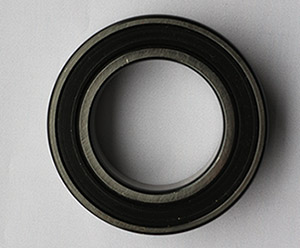
Bearing details
If you have specific requirements or types of bearings in mind, please let me know for more detailed information.
Bearings:
Bearings are mechanical components that enable relative motion between two parts, typically rotating or linear movement. They reduce friction and support loads, facilitating smooth operation in various machines and systems. There are several types of bearings, each designed for specific applications.
Ball Bearings:
Consist of steel balls between inner and outer rings.
Common types: deep groove, angular contact, and thrust ball bearings.Suitable for moderate radial and axial loads.
Roller Bearings:
Use cylindrical, tapered, or spherical rollers between inner and outer rings.Types include cylindrical roller, tapered roller, and spherical roller bearings.Ideal for heavier radial loads and some axial loads.
Thrust Bearings:
Designed to handle axial loads, providing support for axial force transmission.Types: ball thrust bearings and roller thrust bearings.
Needle Bearings:
Have smaller-diameter cylindrical rollers, suitable for high radial loads.Often used in applications with limited space.
Spherical Bearings:
Feature a spherical inner or outer race for misalignment compensation.Used in applications with shaft misalignment.
Common Specifications:
Dimensions: Inner diameter (ID), outer diameter (OD), width/thickness.
Load Capacity: Radial and axial load capacities.
Speed Rating: Maximum operating speed.
Material: Bearing components material (rings, balls/rollers, cage).
Seals/Shields: Open or sealed design with specific sealing types.
Precision Class: ABEC rating (for ball bearings) or P/SP/UP (for roller bearings).
Cage Type: Material and design of the cage.
Lubrication: Type of lubricant and lubrication intervals.
Temperature Range: Minimum and maximum operating temperatures.
Let’s delve deeper into bearing details
Mounting and Clearance:
Specify the mounting method (press fit, interference fit, clearance fit).
Indicate the internal clearance required (C0, C2, C3, etc.).
Vibration and Noise Levels:
Define the acceptable levels of vibration and noise for the application.
Some applications require low vibration or noise, and bearings can be selected accordingly.
Corrosion Resistance:
Specify if the bearing needs resistance to corrosion.
Material selection (e.g., stainless steel) or coatings can be tailored for specific environmental conditions.
Maintenance Requirements:
State whether the application requires a maintenance-free bearing or if periodic maintenance is acceptable.
Environmental Conditions:
Detail exposure to environmental factors such as dust, moisture, or chemicals.Bearings can be equipped with seals or special coatings to withstand harsh conditions.
Certifications and Standards:
Mention any industry-specific or international standards the bearing must comply with.Common standards include ISO, ABEC, or industry-specific certifications.
Special Features:
Highlight any special features required, such as integrated sensors, anti-rotation devices, or specific performance attributes.
Quantity:
Specify the quantity needed for your application.
Bulk orders may impact pricing and delivery times.
NSAR, a professional deep groove ball bearings supplier in China, provides a broad variety of deep groove ball bearing with best customer service and quality assured. With more than 20 yearsdeep groove ball bearings manufacture experience, our deep groove ball bearing has been exported to United States, Canada, Mexico, Brazil, Argentina.NSAR can satisfy your bulk deep groove ball bearing customization needs,We provide 6012 bearing and 6000 bearings series and 6200 bearings series and pillow block ball bearings and 6300 bearing,you can products download.

